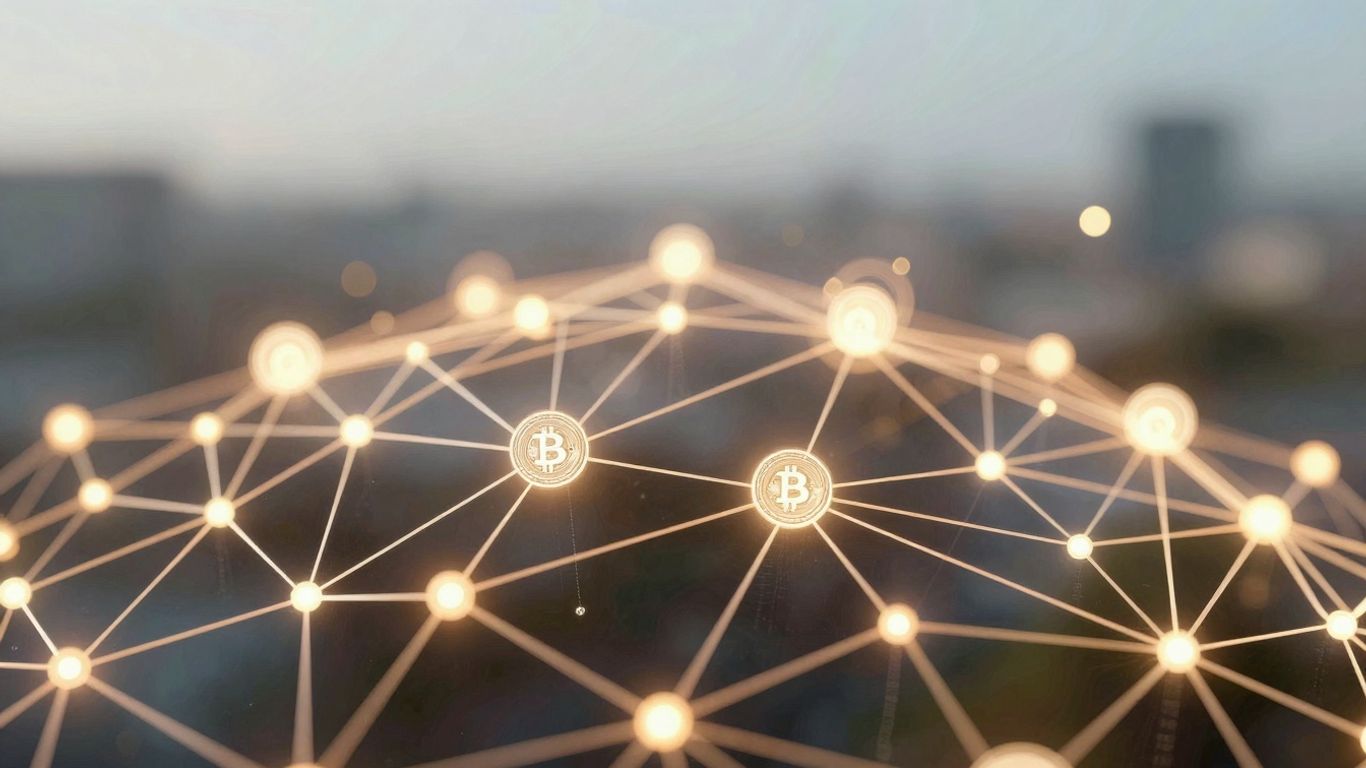[ newsletter ]
Stay ahead of Web3 threats—subscribe to our newsletter for the latest in blockchain security insights and updates.
Thank you! Your submission has been received!
Oops! Something went wrong. Please try again.
Explore real-time vulnerability checks to enhance blockchain security against evolving threats and ensure robust protection.





In the ever-evolving world of blockchain technology, ensuring security is more important than ever. Real-time vulnerability checks are crucial for identifying and mitigating risks in smart contracts and decentralized applications. This article explores the significance of these checks, the common threats facing blockchain systems, and the technologies that enable effective detection and prevention of vulnerabilities.
Real-time monitoring is crucial for blockchain security. It helps in quickly identifying and addressing vulnerabilities. This proactive approach can prevent significant financial losses and maintain user trust in blockchain systems.
To effectively conduct vulnerability checks, several key components are essential:
Implementing real-time checks comes with its own set of challenges:
Real-time vulnerability checks are essential for maintaining the integrity of blockchain systems. They not only help in identifying issues but also in building a more secure environment for users.
Despite the strong security features of blockchain technology, there are still several common security threats that can compromise its integrity. Understanding these threats is crucial for anyone involved in blockchain systems.
Consensus-based attacks target the way transactions are agreed upon in a blockchain. Here are some examples:
Smart contracts can have vulnerabilities that attackers can exploit. Some common issues include:
Decentralized Finance (DeFi) protocols introduce unique risks due to their complexity. Notable vulnerabilities include:
Understanding these threats is essential for developing effective security measures in blockchain systems. By being aware of these vulnerabilities, developers and users can better protect their assets and maintain trust in blockchain technology.
Artificial Intelligence (AI) and Machine Learning (ML) are becoming essential in detecting vulnerabilities in blockchain systems. These technologies can analyze vast amounts of data quickly, identifying patterns that may indicate potential threats. For instance:
Static and dynamic analysis tools are crucial for identifying vulnerabilities in smart contracts.
Formal verification involves mathematically proving the correctness of smart contracts. This method ensures that the contract behaves as intended under all possible conditions. It is particularly useful for high-stakes applications where security is paramount.
In the realm of blockchain security, effective vulnerability management is crucial. Regular audits and continuous monitoring can significantly enhance the security of decentralized applications. By adopting these strategies, organizations can protect their assets and maintain user trust.
Conducting regular security audits is essential for maintaining the integrity of blockchain systems. These audits help identify vulnerabilities and ensure that security measures are up to date. Key steps include:
Using multi-signature wallets can significantly enhance security. These wallets require multiple approvals for transactions, which helps prevent unauthorized access. Benefits include:
Applying robust encryption techniques is crucial for protecting sensitive data. This includes:
Implementing these best practices can significantly reduce the risk of security breaches in blockchain systems. Fail-safes and regular updates are key to adapting to new threats.

In the world of blockchain, 51% attacks can be devastating. These attacks occur when a single entity gains control of more than half of the network's mining power. A notable case involved a blockchain that successfully detected and mitigated such an attack in real-time. The system utilized advanced monitoring tools that alerted the developers immediately, allowing them to take action before any significant damage occurred.
Smart contracts are often targeted due to their vulnerabilities. One successful case involved a decentralized application (dApp) that implemented real-time vulnerability checks. By using automated tools, the dApp was able to identify and fix a critical reentrancy vulnerability before it could be exploited. This proactive approach not only saved funds but also maintained user trust in the platform.
Decentralized Finance (DeFi) protocols are particularly susceptible to attacks. A recent case study highlighted how a DeFi platform integrated real-time checks to monitor transactions. When suspicious activity was detected, the system automatically paused transactions, preventing a potential loss of millions. This incident underscores the importance of continuous monitoring in safeguarding DeFi protocols.
Real-time vulnerability checks are essential for maintaining the integrity and security of blockchain systems. They not only help in identifying threats but also in implementing timely solutions to prevent potential breaches.
The future of blockchain security is heavily influenced by artificial intelligence (AI). AI can help in identifying vulnerabilities faster and more accurately than traditional methods. By analyzing patterns and behaviors, AI can predict potential threats before they become serious issues. This proactive approach is essential for maintaining the integrity of blockchain systems.
The Internet of Things (IoT) is set to merge with blockchain technology, creating a more secure environment for connected devices. This integration can enhance data security and privacy, ensuring that devices communicate safely. For instance, using blockchain can help verify the authenticity of data shared between devices, reducing the risk of tampering.
Decentralized security solutions are gaining traction as they offer a more resilient approach to protecting blockchain networks. These solutions distribute security measures across multiple nodes, making it harder for attackers to compromise the system. By eliminating single points of failure, decentralized security can significantly enhance the overall safety of blockchain applications.
The combination of AI and decentralized solutions is paving the way for a more secure blockchain future, where vulnerabilities can be detected and addressed in real-time.

When assessing vulnerability scanners, it’s essential to consider various performance metrics. These metrics help determine how well a scanner can identify vulnerabilities. Key metrics include:
Here’s a brief comparison of some popular vulnerability scanners:
While vulnerability scanners are valuable, they have limitations. Here are some common issues:
Understanding the effectiveness of vulnerability scanners is crucial for maintaining blockchain security. Regular evaluations can help improve their performance and adapt to new threats.
By focusing on these aspects, organizations can better choose and utilize vulnerability scanners to protect their blockchain systems effectively.
In conclusion, real-time vulnerability checks are essential for improving blockchain security. As blockchain technology continues to grow, so do the risks associated with it. By using automated tools for constant monitoring, projects can quickly find and fix weaknesses before they are exploited. This proactive approach not only saves money but also builds trust among users. With the right strategies in place, we can make blockchain systems safer and more reliable for everyone.
Real-time vulnerability checks are tools that constantly monitor blockchain systems for security weaknesses. They help identify and fix issues quickly to keep the blockchain safe.
They are important because they help prevent attacks and protect users' assets. Quick detection of problems can stop hackers before they cause harm.
Blockchain systems can face threats like attacks on consensus, flaws in smart contracts, and weaknesses in decentralized finance (DeFi) protocols.
AI can analyze patterns and behaviors in blockchain transactions, helping to spot unusual activities that may indicate a security risk.
Best practices include regular security audits, using multi-signature wallets, and applying strong encryption methods to protect data.
Examples include detecting 51% attacks, stopping smart contract exploits, and preventing breaches in DeFi protocols.


